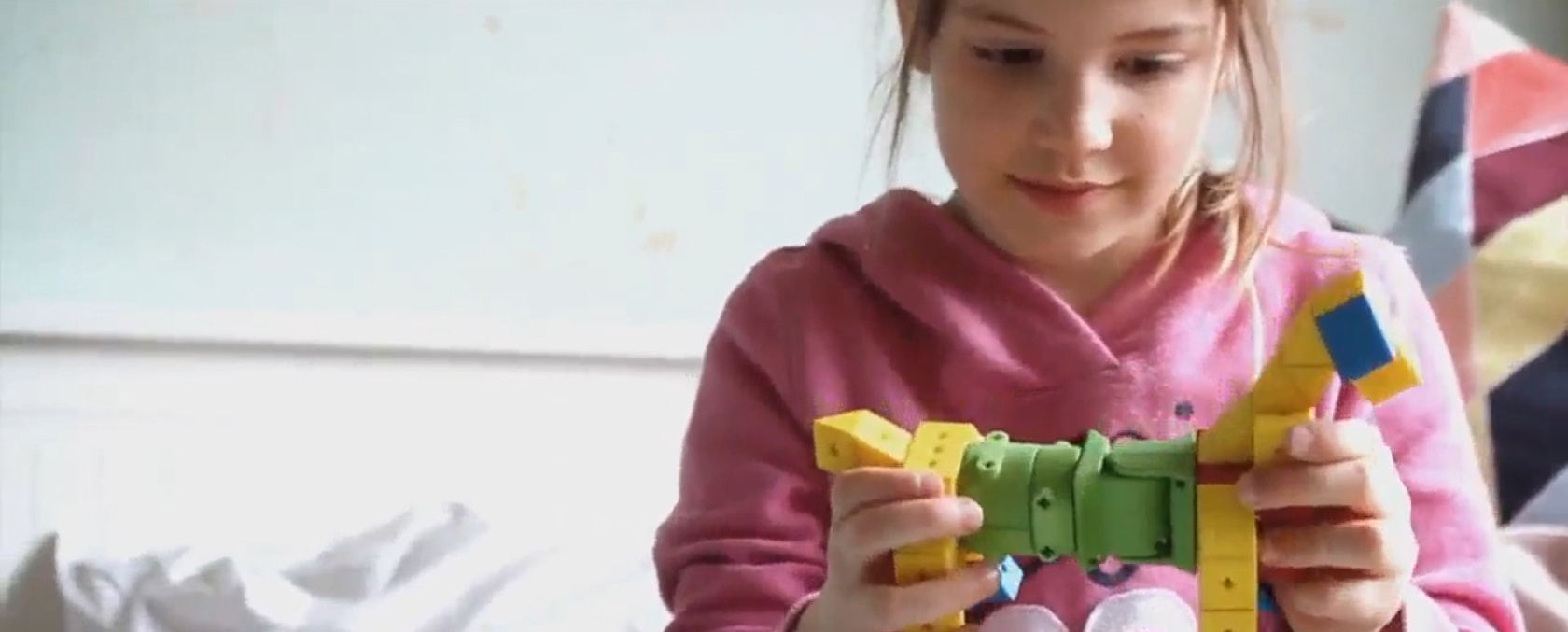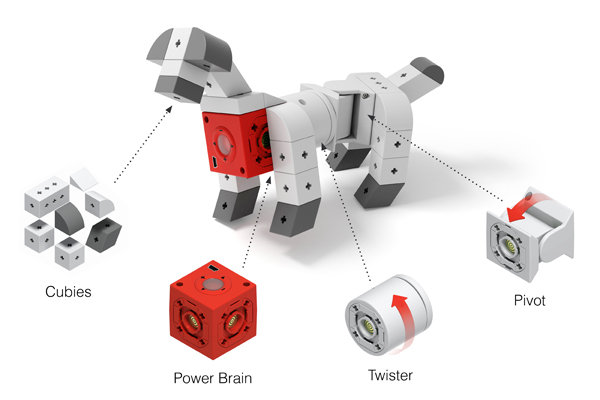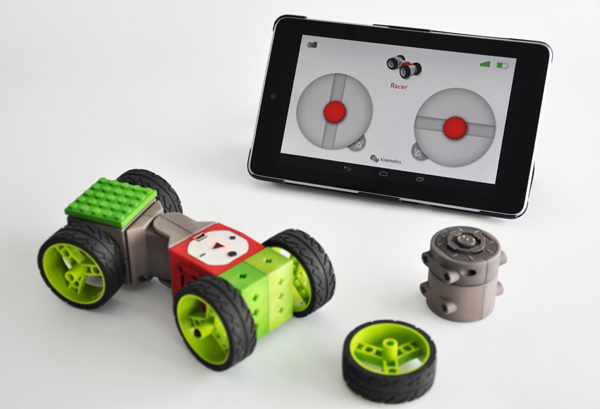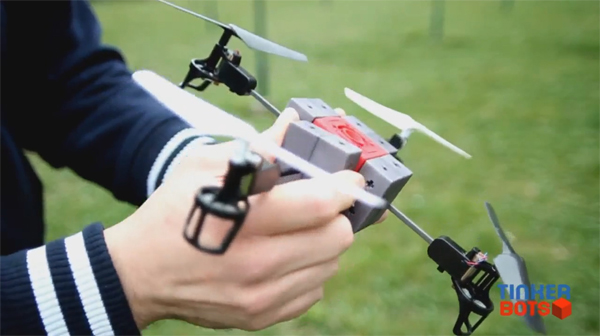Imagine if your toys had a record button so they could remember the way you play with them. This is the premise of Tinkerbots, a new robotic building block system that allows you to design creations with moving parts.
Each toy you build includes a set of camcorder-like buttons, so making them obey your commands is as easy as shooting a movie. You press the record button, then make its legs and arms move to simulate actions like walking or dancing, as you would with any toy, and then press the record button again to finish. Each time you press the play button after, your toy repeats the movements just as you showed it to do.
Motors within the blocks help the pieces move while a central Power Brain block contains the needed battery and computer to run the memorization process. The way the blocks click together forms the needed paths to share electricity and data.
The idea is to provide a simple, educational experience that can teach young children, ages five and up, how to program. This is a skill that’s becoming increasingly more valuable in our hi-tech world.
Tinkerbots is being developed by a group of researchers at the Bauhaus University in Germany. They’ve formed their own company, Kinematics, and are currently half way through an Indiegogo campaign, meaning that you won’t find their kits on store shelves soon. They estimate the kits will reach market in mid-2015, but crowdfunding is known for its delays, so expect a little later from there.
Special pivot and flex blocks give your creations an expressive, pipe cleaner-like range of movement and manipulation. Toys made of blocks are not exactly known for their flexibility, but the masterful way Tinkerbots solves this means that the way you make your toy waddle, crawl, or run is going to be slightly different from everyone else’s. It will have mannerisms, given it by you and in way reflecting your personality.
There’s a demo that co-founder Matthias Bürger did for early investors that says it all. He assembles a dog out of the blocks and then records himself making it walk a few paces before lifting its hind leg for a pee. That their toy allows for that kind of mischievous play immediately sets it apart from most electronic toys that inadvertently force kids into a scripted set of options.
Kids need a bit of mischief in their play. They want to get dirty, scream, and run headlong. Tinkerbots’ ability to allow for mischief while still remaining an educational toy is a valuable mix.
Through a Bluetooth connection and a smartphone app, Tinkerbot toys can connect to your mobile device and be controlled like a remote-controlled toy, but a toy with the movements and actions that you’ve invented.
The kits contain are pretty versatile. They contain a “LEGO Adaptor” piece so you can mix LEGO blocks in with your creations, and for teachers who use Adafruit products, the Tinkerbots microcontroller is Arduino-compatible allowing you to tie the toys into your educational programs.
The kits are expensive as toys go, ranging from $159 to $499 USD depending on the number and type of pieces, but the more I explore the amount of thought and understanding the Tinkerbots seem to have, the more I’m impressed with the toy’s future.
Look at how their early prototypes experimented with slither-like flexible blocks or the upcoming wireless drone kit they’ve been teasing and you can see that the possibilities are endless.
Yes, they have blocks that incorporate solar panels, propellers, sensors, and hand cranks, just like many other science kits, but they clearly are working on ideas no one else too. I mean, wow. Any toy that allows a five year-old child to build their own wireless drone is one to watch.
You can listen to my radio series live every Monday on Moore in the Morning at 6:45 am









